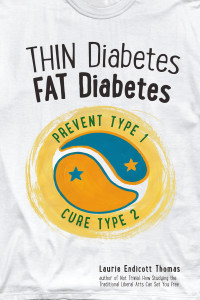Evidence that the United States Department of Agriculture (USDA) and the Department of Health and Human Services (HHS) are finally taking a more wholistic view of nutrition appears in the first paragraph in chapter 1 of the 2015 National Dietary Guidelines For Americans (DGA) Report. Here is the entire first paragraph. (Bold is mine).
“Over the course of any given day, week, or year, individuals consume foods and beverages] in combination—an eating pattern. An eating pattern is more than the sum of its parts; it represents the totality of what individuals habitually eat and drink, and these dietary components act synergistically in relation to health. As a result, the eating pattern may be more predictive of overall health status and disease risk than individual foods or nutrients. Thus, eating patterns, and their food and nutrient components, are at the core of the 2015-2020 Dietary Guidelines for Americans. The goal of the Dietary Guidelines is for individuals throughout all stages of the lifespan to have eating patterns that promote overall health and help prevent chronic disease.”
The view that nutrition involves synergistic interactions of countless nutrients is a view that T. Colin Campbell wrote persuasively about in his fantastic book called “Whole: Rethinking the Science of Nutrition”. These interactions are part of infinitely complex biological systems. Campbell has been writing for years about our misguided view that nutrition involves the effect of single nutrients on health.
The opening paragraph of the DGA report is a step in the right direction. But do the new guidelines actually reflect this newly enlightened, wholistic view of nutrition?
Not really.
A wholistic view of nutrition would logically require one to value a wholistic view of nutrition research – a view that would evaluate robust studies with reductionist and wholistic designs. Apparently the USDA and HHS continue to ignore studies (eg. Ornish, Esselstyn) that show that a low fat whole food plant-based (WFPB) dietary pattern can prevent and even reverse coronary artery disease – our nations’ number one killer.
According to the DGAs, dairy products, lean meats, poultry, eggs and extracted oils are part of a healthy eating pattern. The eating pattern should limit added sugar (<10% total calories), saturated fats and trans fats (<10%), and sodium (<2300 mg/day).
Added sugars, trans fats and sodium are found in moderately to highly processed foods and Americans get most of their saturated fat from animal products. Unfortunately, the USDA and HHS remain reluctant to specify the importance of avoiding animal products, sweetened beverages, candies, cakes, pies, cookies, and any high sodium packaged foods. These specific warnings can be found, but they are hidden within an unnecessarily large and cumbersome report.
The DGAs do encourage teen boys and men to eat less meat, poultry and eggs. Apparently American women are eating these foods in “acceptable” amounts. American women, on average, eat fewer of these foods as compared to American men. However, American women are equally good at dying from heart disease. I think it might be a good idea for them to limit these foods as well.
Cumbersome doesn’t begin to describe The DGA Nutritional Goals.
The DGA Nutritional Goals for different Age-Sex Groups are still greatly influenced by Daily Reference Intakes (DRIs) for selected nutrients and recommended Calorie Levels. DRIs and Calorie levels would not be necessary if the USDA and HHS truly viewed nutrition as a wholistic phenomenon.
What we are left with are unnecessarily complicated and likely ineffective guidelines. Appendix 3 includes recommended amounts of food from each food group at 12 different calorie levels. That’s right – 12!
The calorie level recommended for a moderately active four-year old girl is approximately 1400 cal/day. Here is what a conscientious parent is encouraged to provide the girl:
VEGGIES
- 1-1/2 cup-eq/week dark green veggies
- 3 cup-eq/week red and orange veggies
- ½ cup -eq/week legumes
- 3-1/2 cup-eq/week starchy veggies
- 2-1/2 cup-eq/week other veggies
FRUIT
- 1-1/2 cup-eq/day fruit
GRAINS
- 2-1/2 oz-eq/day whole grains
- 2-1/2 oz-eq/day refined grains
DAIRY
- 2-1/2 cup-eq dairy
PROTEIN
- 4 oz-eq/day protein food to include the following weekly servings:
– 6 oz-eq/week seafood
– 19 oz-eq/week meat, poultry, eggs
– 3 oz-eq/week nuts, seeds and soy products.
This leaves 110 calories leftover per day for other uses.
In addition to the ridiculous weighing, measuring and recording this meal pattern would require, some of the recommendations contradict the overall recommendation of increasing fruits, veggies, and whole grains. Apparently she needs 2-1/2 cups of milk per day, but only 1 ½ cups of fruit. I can’t imagine how that can be defended. I also question why 5 oz/day of whole grains aren’t recommended. Why recommend refined grains at all?
If the parents wanted to follow a “healthy” vegetarian meal pattern, they would still be encouraged to provide their daughter with the same amount of dairy and extracted oils. It’s also recommended that they feed her 3 oz. of eggs per week. My hope that the vegetarian meal pattern would be a WFPB pattern has not been fulfilled.
Back in the summer of 2015, T. Colin Campbell called for the abolishment of the process used to develop the DGAs. I decided to suspend judgment until the 2015 DGAs were released. Now that they have been released, I’m inclined to agree with Dr. Campbell. There has to be a better way to steer Americans towards a WFPB meal pattern – a meal pattern that will greatly improve the health of most Americans.
For what it’s worth, here are the guidelines.
Here is PCRM’s take.






 E Excerpt from Laurie Endicott Thomas’s amazing book Thin Diabetes – Fat Diabetes by clicking here!
E Excerpt from Laurie Endicott Thomas’s amazing book Thin Diabetes – Fat Diabetes by clicking here!
Speak Your Mind